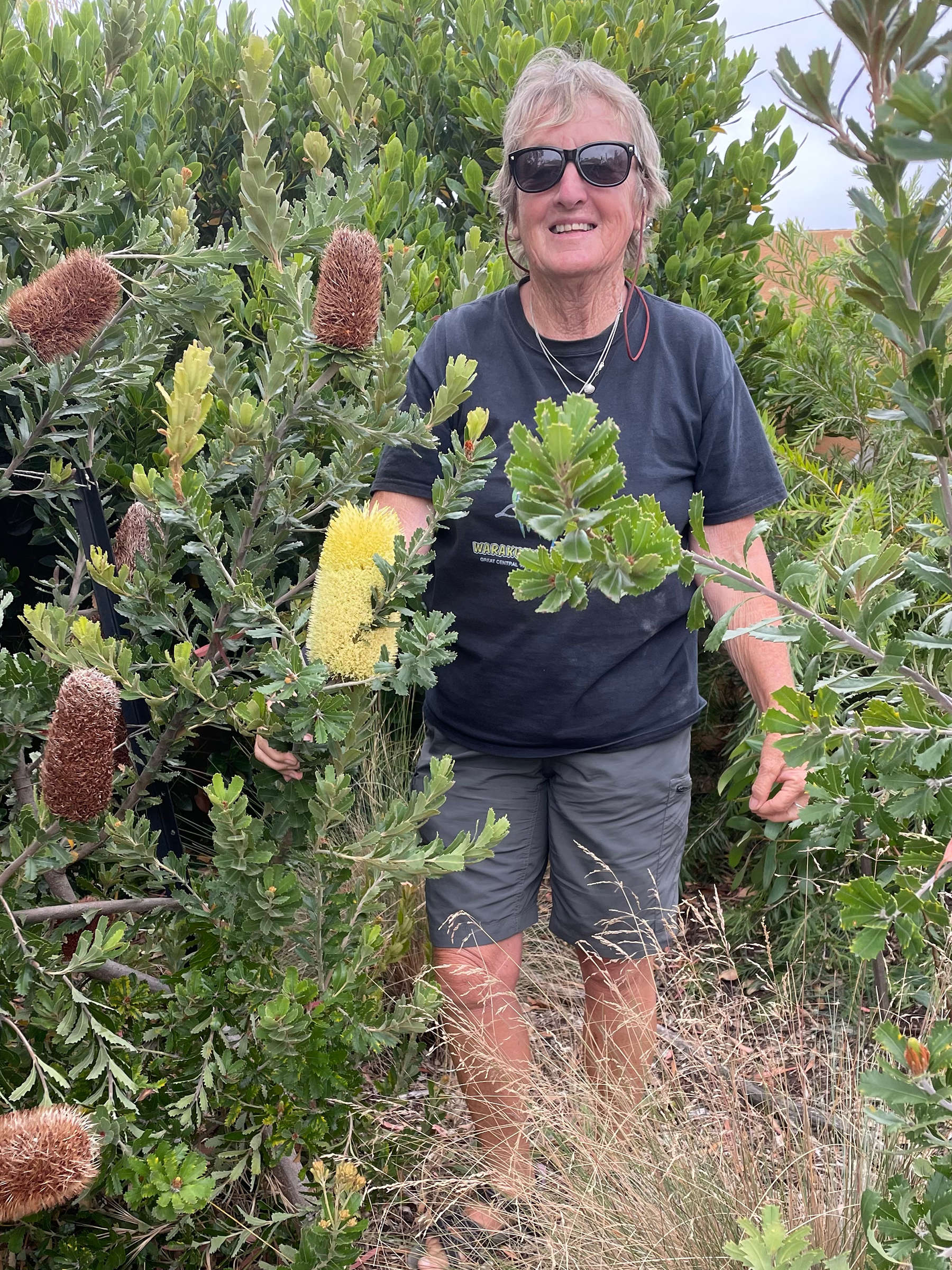When Lou Cunningham lived on 10 hectares at Eaglehawk Neck, she was a member of the Tasmanian Land Conservancy’s Land for Wildlife program. On moving to Lauderdale five years ago, she signed up to its suburban cousin, Gardens for Wildlife, and set about transforming her new property.
Climate Champion creating a welcoming space for wildlife

‘It was nearly all lawn when I arrived,’ she said. ‘There was no shade, and I didn’t want to waste water keeping it green. Plus I love trees.’
Lou wanted a native garden that would look after itself once it was established. She covered the lawn with thick cardboard, watered the cardboard, then mulched it with gum bark.
Her plantings included callistomens, correas, lemon scented myrtle, running postman, pincushion hakeas, native boronia, banksias, westringias and white flag iris. ‘I had to think of what would flower in different seasons,’ she said, ‘and what would provide habitat for different birds and animals.’
When Lou first came to Lauderdale, the only birds in her garden were noisy miners, wattlebirds and doves. Now, thanks to the prickly bushes she has planted to protect them, smaller birds like blue wrens are starting to arrive. Bandicoots and blue-tongue lizards come and go, and she has spotted an Eastern spinebill and a pademelon.
‘We need safe corridors for birds and animals to roam and find food,’ she said. ‘As our suburbs become more built-up, native gardens give wildlife a better chance of survival.’
In 2020, she put in a pond, and she also has a number of water containers around the garden, with sticks and bits of driftwood so that if an animal falls in they can climb out. When she cuts branches from her trees, she lays them along the fence line to create hiding places for bandicoots and lizards.
As well as the Gardens for Wildlife logo, Lou’s fence has a ‘Go Slow’ sign with an image of a bandicoot, and in Spring she puts up a ‘Watch out for Blue-tongues’ notice for visitors. She keeps a note of the rainfall, and a record of the different creatures she sees in her garden.
‘That way I feel as if I’m getting a bit of success,’ she said.
Lou encourages other people to register with Gardens for Wildlife, even if they only have a few pots on a balcony to attract bees and insects. ‘It costs $30, which covers the sign plus helpful information about what to plant.’
According to the Gardens for Wildlife website, ‘No matter how small your garden — regardless of whether it is just plant containers, or a courtyard, rooftop garden, deck or larger space — we can all contribute to the survival of wildlife and increase awareness of protecting our natural diversity.’
Clarence Climate Action has chosen Lou Cunningham as this month’s Climate Champion. To enquire about registering your garden, email gardensforwildlife@tasland.org.au.
Eastern Shore Sun, March 2024, page 6